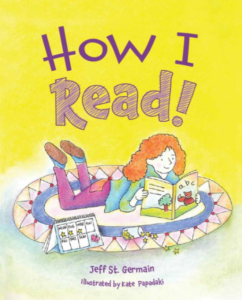“Literacy Infrastructure: Strategies to Develop Pre and Early Readers into Avid Active Readers”
Converting reluctant readers to avid readers is more of a challenge than to prevent children from becoming reluctant readers. I have read many awesome strategies to convert these reluctant readers but as a passionate literacy advocate,I focus on laying the “ literacy infrastructure” with the objective of developing pre and early readers into avid active readers.
Infrastructure’s 2nd definition by Marriam-Webster’s dictionary:”the underlying foundation or basic framework as of a system or organization”.
Literacy infrastructure: Think of every experience that builds a child’s language skills, exposes them to genres and models ways on how to process incoming information, as a child’s literacy infrastructure
Language skills are developed through the process of “word experiences” and the “word-experience” is the fundamental skill relied on so that children can learn to read. In the article Early Catastrophe by Betty Hart and Todd Ridley (date), it confirms that children that have 13 million or less word experiences are less likely to become proficient readers and unlikely to earn a high school diploma and most of these children are raised in underserved homes. While children that have 25 million or more “word experiences” are highly likely to be proficient readers, earn a high school diploma and qualify to enter in a higher education program.
Expose pre and early reading age children to as many genres as possible and you will greatly increase their chances that they will develop a desire to learn to read. There has to be at least one genre that your child will enjoy reading, and the best time for a child to discover this is before the age at which they should be prepared to learn the phonetic reading skills.
Modeling the act of reading to children is very important! Do you read to a child or with a child? Knowing that children’s minds are like sponges and that they mimic the people around them, they can subconsciously develop active reading skills from the way literature is read to them or with them. Because of the method in which you read with your child, you are modeling a way or ways in how to process and manage new information that is presented within the literature that both of you are consuming. The steps that we take to manage the information presented by the author are regarded as “active reading skills”, which are formally taught in the middle school years, but I posit that these skills can begin to develop in the pre reading years while children are being read with.
Active reading skills are helpful to obtain the lesson as well as to increase the entertainment of the piece of work a person is reading.
My series: How I Read, How I Play, and How I Eat are written in the same style with the same main objectives, to develop language skills through word experiences and to recognize that the world we live in is quite diverse. These books have no main characters,and if you think about it, you, the readers are the main characters. I wrote these books under the premise of sitting in a room with four or five pre reading age kids and asking them the question,”how do you read (eat or play)?” I then wrote down some plausible answers that these children might have come up with; for the sake of fun. I ad-libbed and rhymed some of the plausible answers and like magic the text of my books was completed.
For the most fulfilling experience when you read my books, discuss the assumed silly replies that I wrote down. Share your own (being silly is optional) and request your child to share theirs. Your discussion will not only lead to a volume of quality word experiences but it could also be quite enlightening such that you better understand what, why, and where and how your child likes to read, eat, and play. They are very important activities at this age! Any information that you can apply that increases the quality and volume of positive experiences related to reading, eating and playing is useful to you as the primary educator and nurturer.
The plan for the sequel: How I Help, How I Learn and How I Respect is for me to obtain real replies from brilliant young minds and creatively write them into books. For this series, I would expect to donate the majority of the proceeds to the benefit of supporting children’s literacy.
My 501c3, Timely Active Literacy Skills Development (TALSD) has not yet been established, and my goal is to complete that project 2020. All children could use a unified network of literacy tools and resources while the underserved children need programs to assure that they access these tools and resources on a regular basis. The vision that I have will provide all kids with the opportunity to enter kindergarten with the quality of literacy infrastructure necessary to develop as proficient readers through the third grade so that they are able to read to learn there after.
To learn more, visit https://howtoreadbooks.com/
About the Book: How I Read celebrates the mystical yet plausible answers from our beloved pre-readers to the question, How do you read? Follow along to discover the whimsical, creative, and sometimes unexpected responses of children from all walks of life.
About the Author: As a dad, an uncle, and a friend of pre-reading age children, Jeffry St. Germain loves to read and converse with them. He enjoys using a play on words for the sake of igniting thoughts and smiles. In a nutshell, this defines the writing style of How I Read.
Thank you so much for this guest post–what a fun away to approach early literacy!


1 thought on “Author Guest Post: “Literacy Infrastructure: Strategies to Develop Pre and Early Readers into Avid Active Readers” by Jeff St. Germain, Author of How I Read”